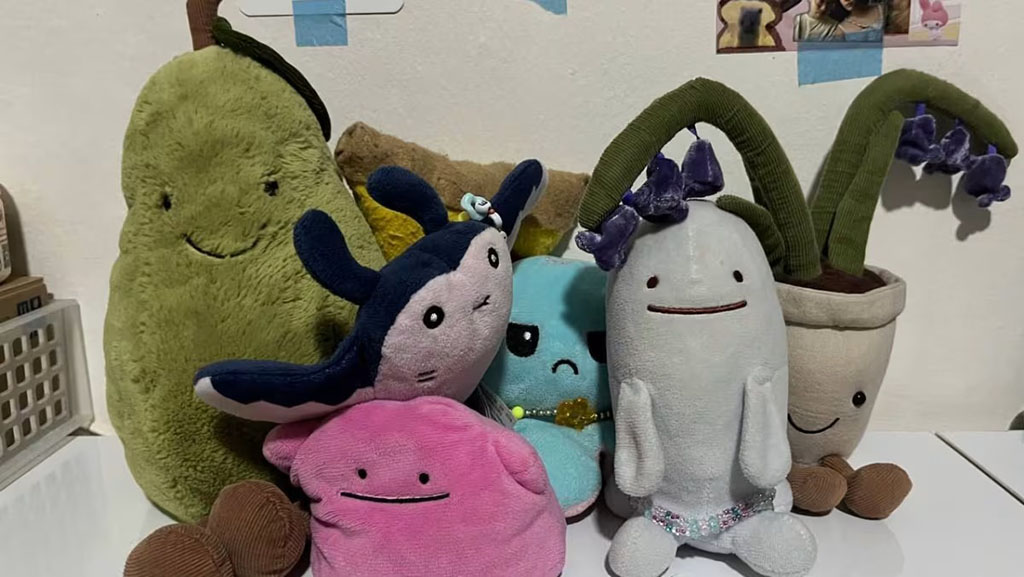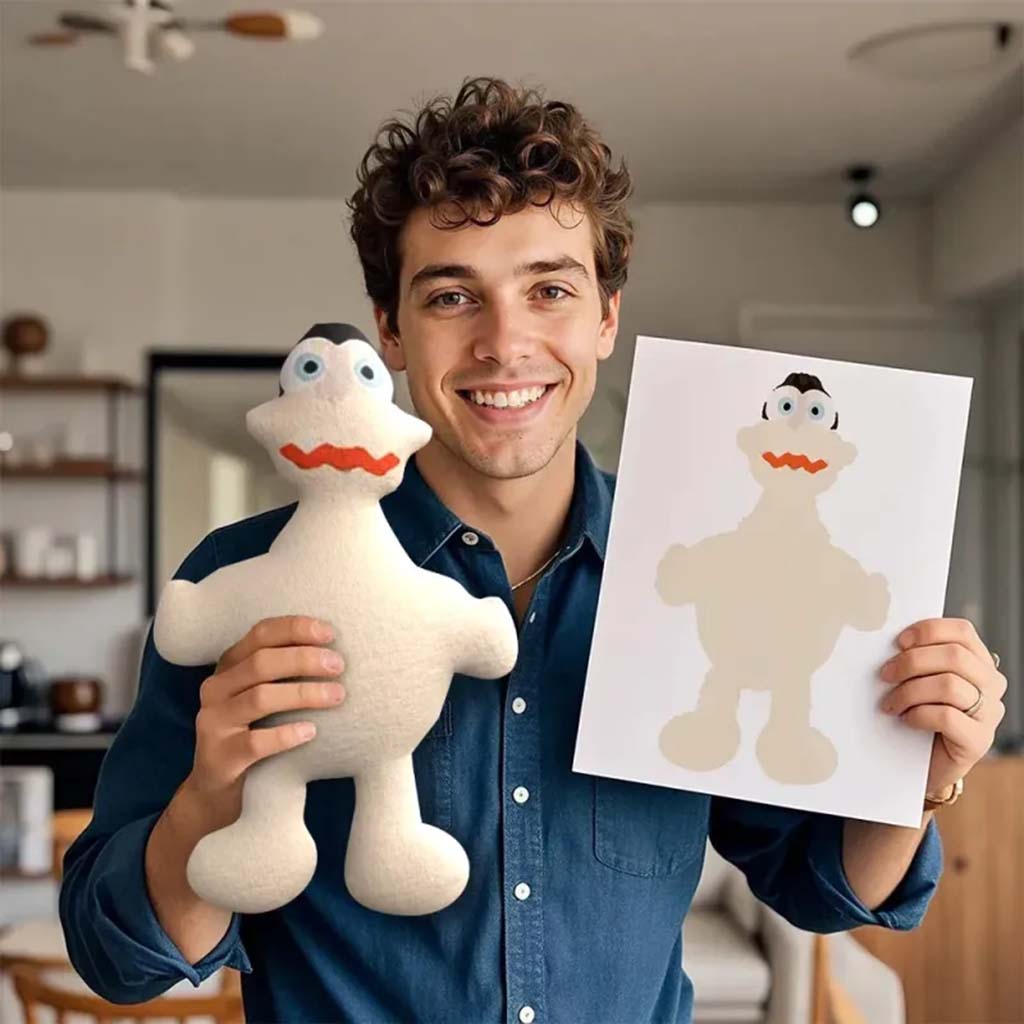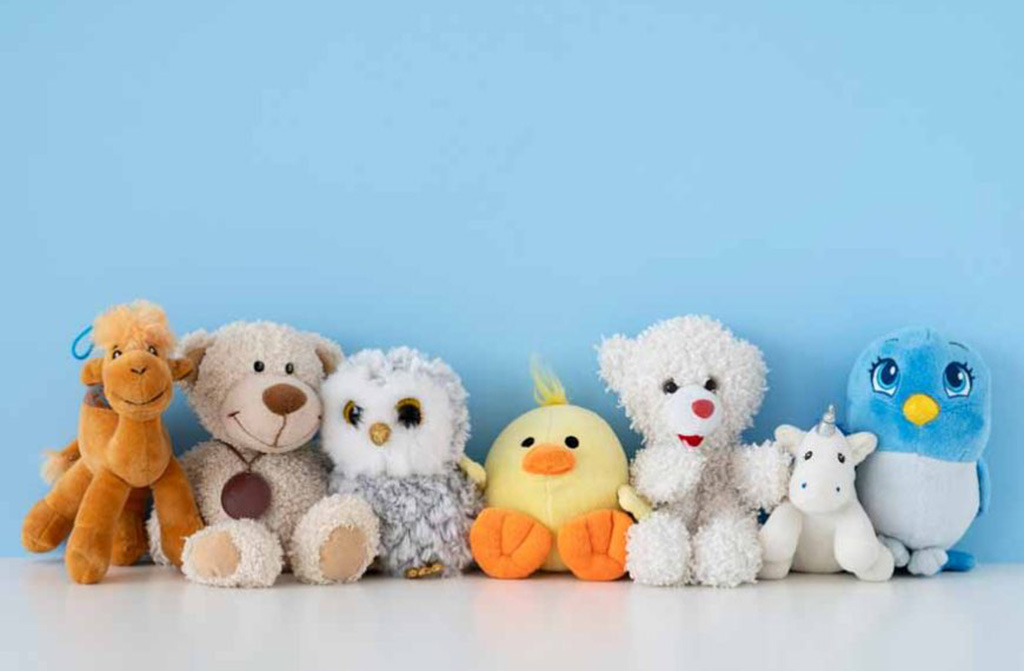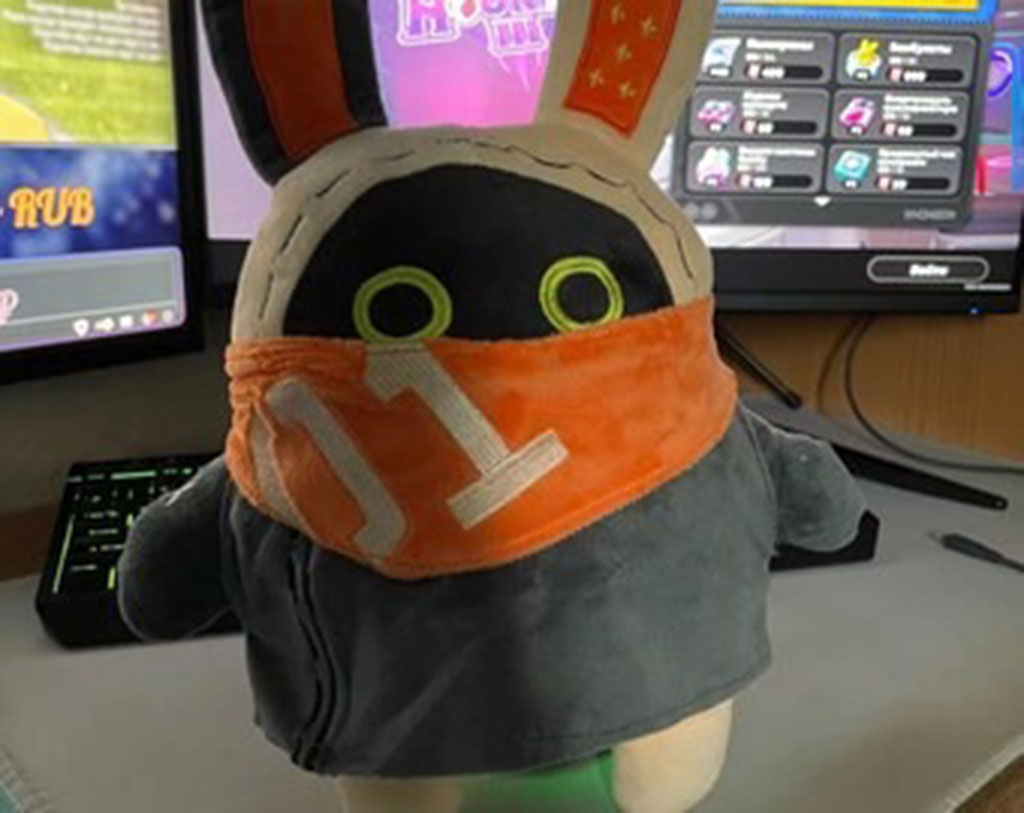By Amanda — Kinwin (OEM/ODM plush manufacturer, CE & ASTM ready)
Softness is not an accident. It’s the sum of fiber science, fabric engineering, finishing chemistry, and stuffing design. In our factory, we tune denier, crimp, pile, backing, finishes, and fill to create that “cloud” handfeel buyers want—without sacrificing durability or safety. Here’s a practical, plain-English guide you can use to brief suppliers or build your own softness spec.
What fiber properties—denier, crimp, and cross-section—most influence perceived softness?

The “first touch” of a plush face is driven by fiber fineness (denier), curl (crimp), and cross-section geometry. Finer filaments bend with less force, so they feel silky. Controlled crimp traps air and adds resilience. Specialized cross-sections lower surface friction and reflect light for a gentle sheen.
- Denier (d): Lower = finer = softer (e.g., 0.9–1.5d microfibers for minky).
- Crimp: Light, uniform crimp improves spring-back without scratchiness.
- Cross-section: Trilobal, hollow, or scalloped shapes reduce friction and increase loft.
Table 1 — Fiber-Level Levers for Softness
| Property | Softer Range (Typical) | What It Does | Trade-Off to Watch |
|---|---|---|---|
| Denier | 0.9–1.5d (micro) | Silky hand, drape | Cost ↑, pilling risk if backing is weak |
| Crimp | 6–10 crimps/inch, low amplitude | Air entrapment, soft bounce | Too much → bulk & matting |
| Cross-section | Trilobal / Hollow / Scalloped | Lower friction, sheen, loft | Dye uptake varies; color control needed |
| Polymer | High-grade PET, modified PET | Consistent fineness, strength | Lead time for special grades |
How do pile length, pile density, and knit backing construction shape plush handfeel?

Softness you see comes from pile design; softness you feel over time comes from the backing’s stability. Short pile looks clean and sleek; medium pile feels plush; long pile looks “cloudy” but needs grooming. Density adds body; backing controls stretch and seam strength.
- Pile length:
- 1–3 mm (minky/velboa): precision + silky glide.
- 3–10 mm: fuller hand, “cuddle” effect.
- 10–25+ mm: luxury fluff; best for premium or realistic animals.
- Pile density (pile weight/GSM): Higher density = richer hand, better cover.
- Backing: Warp-knit (tricot) is stable for embroidery/face panels; weft-knit offers drape but can distort fine details.
Table 2 — Pile & Backing Matrix
| Parameter | Softer-Feel Choice | Why It Feels Soft | Production Note |
|---|---|---|---|
| Pile Length | 2–6 mm for “buttery” feel | Enough fiber tips to glide on skin | Use stitch stabilizer for embroidery |
| Pile Density | 250–350 gsm for face/body | Dense cover, less “balding” | Heavier fabric → slower sewing |
| Knit Backing | Warp-knit tricot | Stable, reduces snaggy seams | Better face symmetry |
| Stretch | Low–moderate, controlled | Smooth hand under tension | Prevents grin-through at seams |
Which finishing processes (raising, shearing, brushing, silicone softeners) deliver ultra-soft surfaces?

After knitting and dyeing, finishing turns “okay” fabric into luxury plush. We combine mechanical and chemical finishes to control tip uniformity, glide, and anti-snag.
- Raising/Napping: Lifts fibers for a pile effect; sets the base softness.
- Shearing: Levels the pile to one height; cleaner face, less drag.
- Brushing/Polishing: Aligns pile, reduces micro-snag, increases sheen.
- Silicone micro-emulsions: Lubricate fiber surfaces to reduce friction.
- Cationic/hand builders: Add body without stiffness (use carefully to avoid residue).
- Heat-setting: Locks pile laydown, improves wrinkle recovery.
Table 3 — Finish Menu for “Cloud Touch”
| Finish | Softness Effect | When to Use | Caution |
|---|---|---|---|
| Raising + Shearing | Uniform, velvety tips | Minky/velboa faces | Over-shearing thins cover |
| Brushing/Polishing | Glide, sheen | Premium & photo areas | Brush direction must match assembly |
| Silicone Softeners | Lower friction, silkier hand | Baby & face panels | Too much → oily hand, test wash |
| Heat-Setting | Pile memory, reduced crush | All | Set temp below fiber Tg to prevent glossing |
How do stuffing selections—3D hollow conjugate fiber, micro-denier fill, or microbeads—affect loft and rebound?

Surface is only half the story. The fill controls how the plush compresses and “springs back.” The best softness uses surface + stuffing synergy.
- 3D Hollow Conjugate Fiber (HCF) fill: Spiral or side-by-side crimped fibers with hollow cores; loft + rebound + light weight. Industry workhorse for huggable plush.
- Micro-denier fiberfill: Extremely fine, creates a buttery squeeze but may pack down faster if under-filled.
- Microbeads/PP pellets (sealed pouches): Provide weighted drape and a smooth shifting feel (for older age grades).
- Foam chips/blocks (select zones): Add structure in muzzles or bases so the outside can stay ultra-soft without collapsing.
Table 4 — Stuffing & Softness Tuning
| Fill Type | Feel on Hug | Best Use | Setup Tips |
|---|---|---|---|
| 3D Hollow Conjugate Fiber | Lofty, bouncy | Core bodies, arms | Map fill density by zone |
| Micro-denier Fiberfill | Ultra-silk squeeze | Premium face/body | Increase fill slightly to avoid collapse |
| Pellets/Microbeads (pouched) | Weighted, soothing | Bases, older-age plush | Always in sealed inner pouches |
| Foam Insert (select) | Shape-holding | Snouts, ears, bases | Add perforations for wash/airflow |
What roles do antistatic treatments, heat-setting, and moisture regain play in tactile comfort?

Ultra-soft fabrics can still feel “sharp” if static builds or if the pile mats after packing. Two quiet heroes: antistatic control and thermal memory.
- Antistatic: Topical antistatic or carbon-inlaid yarns reduce cling and “sparkle,” especially in dry climates.
- Heat-setting: A controlled bake resets pile direction and stabilizes the knit, so the plush “relaxes” after compression.
- Moisture regain & finish balance: Polyester is hydrophobic; using the right silicone/cationic blend keeps glide without a waxy film.
- Handling & packing: Pile cards, vented bags, and correct stack heights keep the face from imprinting during transit.
Table 5 — Comfort Stabilizers
| Factor | Softness Benefit | Implementation | Risk if Ignored |
|---|---|---|---|
| Antistatic | Less cling, smoother stroke | Topical finish or antistat yarn | “Snaggy” feel, dust attraction |
| Heat-Setting | Pile memory & drape | Controlled temperature/time | Crush marks, uneven laydown |
| Finish Balance | Glide without residue | Silicone micro-emulsion + rinse | Waxy hand, poor wash fastness |
| Packing Method | Preserves surface | Pile-to-pile, vented poly, belly bands | Creasing, gloss spots |
How are softness and durability validated using Kawabata, Martindale abrasion, pilling, and wash tests?

Softness must survive reality: hugs, washing, and shelf time. We combine subjective hand panels with objective lab data.
- Kawabata Evaluation System (KES) (optional, advanced): quantifies surface friction (MIU) and compressional softness (LC/RC)—excellent for R&D benchmarking.
- Martindale Abrasion: ensures tip integrity on high-touch zones (noses, paws).
- Pilling Tests (Random Tumble/ICI): evaluates fuzz ball formation.
- Colorfastness: to washing, rubbing, saliva/sweat for baby lines.
- Wash/Recovery Cycles: checks hand retention after multiple washes and tumble/air dry routines.
- Seam Slippage & Strength: confirms backing holds pile under stress so softness doesn’t cost durability.
Typical acceptance (buy-side examples; align to your brand standard):
- Pilling ≥ Grade 4 after test cycles.
- Colorfastness to washing/rubbing ≥ 4–5.
- Martindale abrasion: meet your cycle target without tip break.
- KES MIU shift within a tight band after 3 wash cycles (if you use KES).
Putting it together: a simple “softness spec” you can brief
- Face/Body Fabric: Minky, 2.5–3 mm pile, 280–320 gsm, warp-knit tricot backing, microfiber 0.9–1.2d PET.
- Finishes: Raise + shear + brush; silicone micro-emulsion hand; antistatic; heat-set.
- Stuffing: 3D HCF fiberfill (primary); micro-denier blend for face zone; sealed pellets in base (older-age only).
- Comfort QC: Pilling ≥4; CF to wash/rub ≥4–5; seam slippage within limit; optional KES benchmark on MIU/LC before & after 3 wash cycles.
- Compliance: EN 71-1/2/3, ASTM F963, CPSIA (lead/phthalates); material traceability for lab tests.
Conclusion
Plush softness isn’t magic—it’s a system. Fine denier fibers create silkiness, balanced pile and backing create a gentle glide, finishes deliver that cloud touch, and smart stuffing maps keep the hug soft yet resilient. Then we lock it with antistatic, heat-setting, and real-world tests so softness lasts beyond the first unboxing. At Kinwin, I turn these levers into clear specs you can scale—from baby-safe minky to photo-real faux fur.
Contact me at [email protected] or visit kinwintoys.com. I’ll help you set a softness spec that passes CE/ASTM/CPSIA and wins the first touch on shelf.







